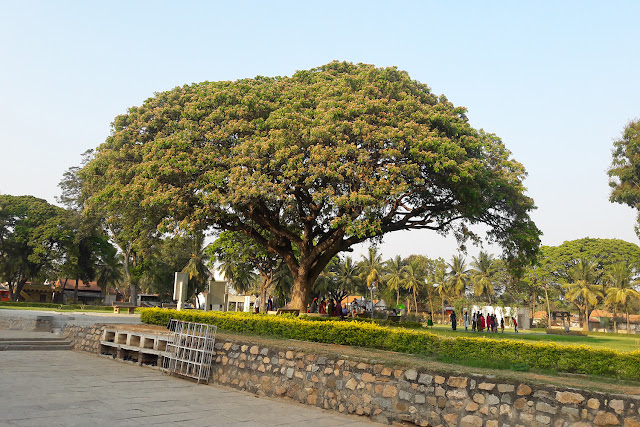Somanathapura is around
140 Kms from Bangalore and 35 Kms from Mysore. The Chenna Kesava temple in
Somanathapura was built in the 13th century during the reign of
Narashimha 111 by his army general “ Somnath “ , hence the name of temple. It is situated on the left bank of river Cauvery.
This temple is said to be the last major temple of Hoysala Dynasty . The 750 year old temple is constructed in the Hoysala architecture style. It has old stone statues of Kesava in different forms. This is one of the Hoysala temples nominated for UNESCO World Heritage Site status.
Somnathpur is often referred as poor cousin of Belur and Halebidu ,and unlike Belur and Halebidu ,it was not severely damaged by invaders. The temple has architecture like the usual Hoysala temples but not as elaborate as that of Belur and Halebidu. It has beautiful architecture and excellent carvings .
The history of this temple and all related facts are inscribed on a slab , in old Kannada script , at its entrance inside the temple.Dated between 1269 and 1550 AD it contains the details of construction and grants made to it by rulers.
It is a lovely peaceful location set in a small park landscape with beautifully kept lawns.
The temple is housed inside an impressive high walled enclosure and the entrance to the complex is through a porch with tall lathe-turned pillars. The entirety of the temple is covered with sculptures.
There is also big Deepasthamba outside the temple .
The temple stands on a raised platform like other Hoysala temples. The platform of the temple is adorned with two seated lions.
The temple facing east has three garbhagrihas on the west , north and south , all connected to a common pillared hall through a separate sukansi . The western sanctum houses image of Vishnu as Kesava . The south has the image of Venugopala and the north has image of Janarthana.
There are
supposedly scratches on the statues . Hence this place is called a dead
monument , the deities are not worshipped here.
The most distinguished feature is its 16 different ceilings , each depicting different stage of blooming plantain ( Banana flower ) . The ceiling of the main hall supported by large pillars and is decorated with ornate lotus petals , banana buds , snake- like knots . The ceilings and doorway leading to sanctum Santorum are beautifully carved with soap stones.
The walls above the plinth are also carved with exquisite figures of Gods and Goddesses taken from the Hindu puranas and arranged in vertical panels. The vimana over the sanctums have greatly carved images of Gods.
Unfortunately , this temple is no longer used as a place of worship , but it still charms visitors .It is an absolute delight for professional photographers .This temple is maintained by Archeological Department of India.
It is a must visit place for anyone who liked ancient Indian
temple architecture.






















